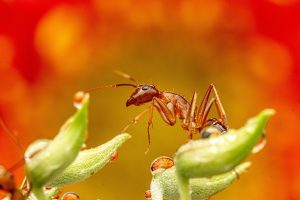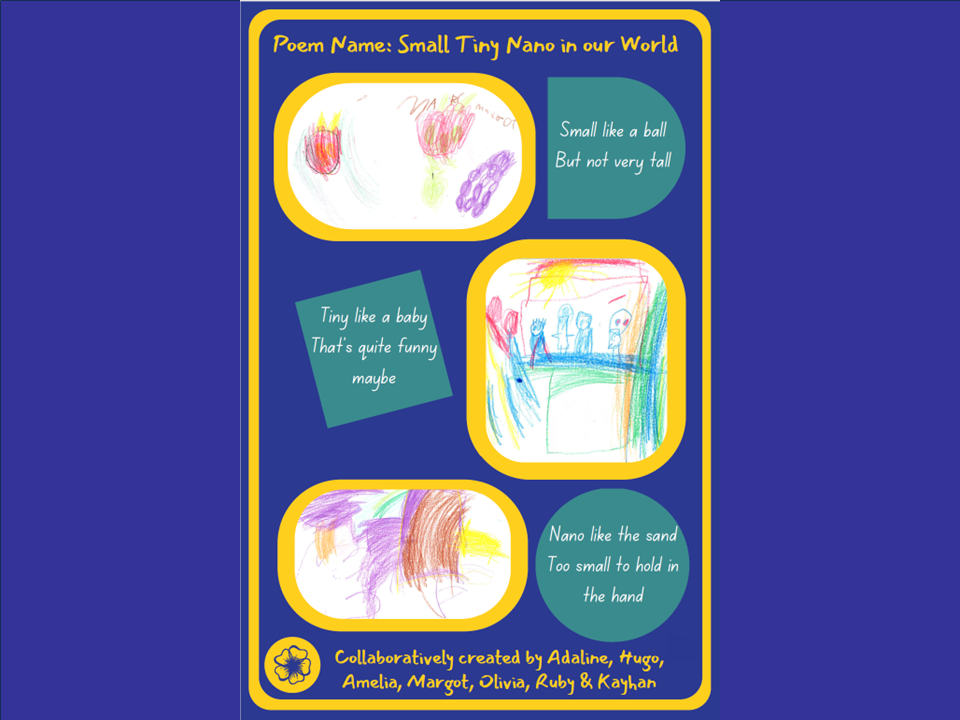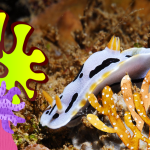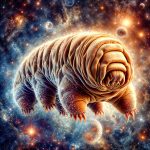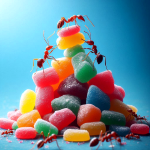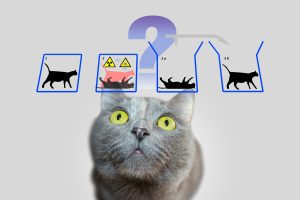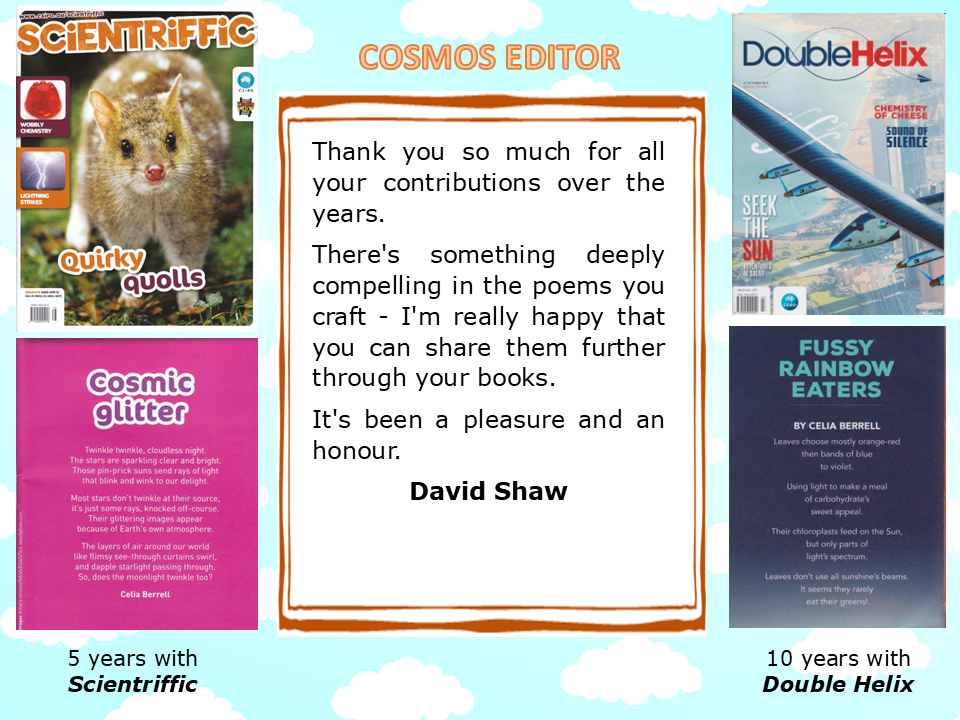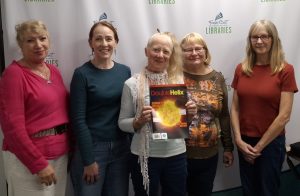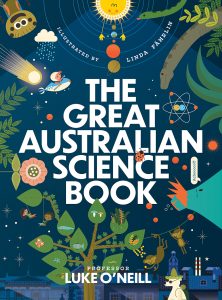A big THANK YOU to all the adults and students who have shared their creations about LOVING LIVING THINGS for #ScienceWeek2024 (10-18 August) and POETRY MONTH!

STUDENT POEMS:

Kidneys and Mussels by Chloe F & ChatGPT
(Mandurah Baptist College, WA)
In waters deep where currents weave,
Where sea and sky a tale conceive,
The mussels cling with steadfast might,
Nature’s filters, day and night.
With shells that guard their tender hearts,
They purify where life imparts,
Through siphons, drawing in the sea,
Cleansing waters, wild and free.
Within our forms, a mirrored grace,
The kidneys hold a vital place,
In veins where crimson rivers stream,
They filter life, a constant theme.
Nephrons toil in silent chore,
Clearing toxins, evermore,
Through loops and ducts, the blood they mend,
A tireless work, no start nor end.
So, mussels in the ocean’s flow,
And kidneys where our pulses go,
Each play a role in Nature’s plan,
Preserving life, as best they can.

Mushrooms and Fungi by Tayla & ChatGPT
(Mandurah Baptist College, WA)
In hidden realms beneath the ground,
mycelium spreads without a sound.
From forest deep to urban sprawl,
fungi weave life’s thread, standing tall.
Through symbiosis, they sustain.
Decomposing, they cleanse and gain.
From mushrooms’ caps to moulds unseen,
nature’s recyclers, evergreen.

Stem Cells by Alannah and Yana & ChatGPT
(Mandurah Baptist College, WA)
Stem cells are like tiny builders.
In bones and brains, their craft bewilders.
From marrow’s heart, when they’re awoken,
they multiply and fix what’s broken.
They self-renew, then fade away.
But in that time, they save the day.
Repairing tissues, they do their part,
keeping us healthy, right from the start.

Hawksbill’s Odyssey: A Tale of the Endangered Sea by Zeke & Chat GPT
(Mandurah Baptist College, WA)
In coral reefs with colours bright,
where waters gleam with sky-blue light,
the Hawksbill turtle roams so free.
A marvel of the deep blue sea.
It feasts on sponges, toxic, rare.
A meal few other beasts would dare!
Through the Pacific, Atlantic tides,
in Indian waters, it resides.
From feeding grounds to nesting shores,
she journeys far, where warm sea pours.
A migration grand, to beach birthright,
guided by the ocean’s light.
Yet shadows cast upon its shell,
a tale of sorrow we must tell.
For centuries, of greed and trade,
mean turtles need our help and aid.
Their critically endangered tale
sees numbers low, its fate now frail.
But hope remains if we unite,
to guard its home and end the blight.

The Gods of the Wild Ducks by Louis and Ethan & ChatGPT
(Mandurah Baptist College, WA)
In quiet ponds where short shrubs sway,
the ducks glide softly, night and day.
With silky feathers, soft and light,
they swim in circles, oh what a sight.
At dusk they forage, without a sound.
Their presence emerges all around.
Together they glide, couples side-by-side,
in harmony, with gentle pride.
Through river’s roots they weave and dart.
Eating and dabbling, they depart,
for games of chase, to quack and play,
on watery ponds in life’s ballet.
When winter’s chill begins to bite,
they gather close, a cozy sight,
then flocks will form, as ducks alight,
for warmer waters, all take flight.
We celebrate ducks, both wild and free,
in everyone’s heart, they live rent free.
With feathers so soft, their souls so bright,
they fill our minds with pure delight.

Tasmanian Devil by Lucy and Tiffany & ChatGPT
(Mandurah Baptist College, WA)
Crawling through the night,
a person’s greatest fright,
under the moonlit stars,
covered in all its scars.
Creeping through the shadows,
as the harsh wind blows,
a nocturnal creature,
silent and eager.
Dark, black eyes,
eating animals double their size.
Strong teeth and jaws;
Dagger-like claws.
Ear-bursting scream,
Echoes through a bad dream,
a fearsome, spine-chilling call,
over mountains tall.
Hunting alone, rushing around,
yet feasting together unbound.
Wild and free-spirited, roaming his territory,
Tasmania’s heart, he will always be!

Deep Blue by Shayla and Georgia
(Mandurah Baptist College, WA)
Deep blue waters slowly fade grey,
colourful corals are bleaching away.
Hello litter, you’re choking sea-life,
the ocean is now in serious strife.
Sharks fail to thrive, seals fail to chase
with less clear space for fish to race.
Seagulls are strangled and crabs are tangled.
Fishing line is the knife of the ocean,
But people aren’t raising enough commotion.
What once was there
is getting stripped bare.
The ocean’s in serious despair.
We need many people to care.

Firefly by Chloe O
(Mandurah Baptist College, WA)
Luminescent and bright,
flying through the night,
fiery tonight.
Lift and thrust,
gravity and drag,
Making you fly so nice tonight.
My little friend flying so high.

Beautiful Trees by Lyla
(Mandurah Baptist College, WA)
Trees absorb carbon dioxide each day,
deep in the forest, where shadows play.
Solar-cell leaves wave in the breeze,
soaking up sunshine to feed their trees.
A tree-trunk’s rings show its age fulfilled.
Beneath their branches, the earth is still
where roots reach far through dirt and soil,
these anchors hold firm as they curl and coil.
In Autumn’s light, shedding sheets of gold
a fleet of splendour precedes winter’s cold.
This home for wildlife, when new buds appear
make Spring’s rebirth in trees so dear.
When winter’s breeze is ice and bare
do trees carry thoughts of summer’s flare?
Through every season’s subtle tease
trees are most sacred
for people …
and bees.

The Forest Bear drawn by Muhammad
The Forest Bear by Muhammad-Rizqi-Akbar-Riani & ChatGPT
(Li Sing Tai Hang Elementary School, Hong Kong)
In forest dense, where tall trees stand,
our Brown Bear ambles on the land.
Wandering through the leafy ground,
seeking tasty food around.
Hunting claws and shaggy fur,
our bear’s large paws rest unperturbed.
Endless hunger makes him search for
berries, nuts, and bugs galore,
In forest dense, he wanders on.
Alert for danger, sharp at dawn,
smelling air for friend or foe,
not knowing what the woods may show.
When snow comes, he will find his den.
Curling up to sleep till when
the Spring returns, with longer days,
then back to endless foraging ways.
As cycles turn and turn once more,
our brown bear wanders as before.
Always watchful, ever strong,
content to roam the whole day long.
When they aren’t hibernating, Brown Bears take some short naps in the daytime. Otherwise, they are busy eating nearly all day and night!

Photo by Stacey James
Baby Turtle Race by Aodhan James-Bige with Stacey James (Bundaberg, QLD)
I live in a Queensland coastal town,
where there’s so much amazing wildlife around.
I’m lucky to be right across from the beach,
where a Loggerhead Turtle nursery’s in reach.
One day in February, at my favourite place,
I was amazed to see …. baby turtles race!
Through sand, pumping flippers, more and more,
often stumbling, they raced towards ocean’s roar.
Four little hatchlings, but which way to go?
Our turtle’s the reason to keep down night’s glow.
Their instinct’s to aim towards town’s light,
even though the ocean’s within their sight.
As the hatchlings scramble along the sand,
their inner compass remembers this land.
Reaching adulthood, they might just return
to this exact place from where they were born.
Only one in a thousand survive to be adults.
We need to help them get better results!
We can clean up our beaches and clean up the sea
to ensure that more turtles will thrive, swimming free.

Cavoodles by Phoebe-Hope & AI (Oakhurst, NSW)
In fur of blended grace, part Poodle, part Cavalier,
Cavoodles meld traits with intelligence clear.
Cute eyes and fluffy ears is their tale,
Cuddly companions whose love will not pale.
With each hug, a cheerful bond will prevail.
In coats of blended grace, where breeds entwine,
Cavoodles meld traits with playfulness fine.
Easy-going, with ticklish tails that sway,
Their sunny smiles brighten even the darkest day.
With each cuddle, their love a steadfast sail.
In fur of blended grace, part Poodle, part Cavalier,
Cavoodles, a treasure truly, a God-send.
Loyal and gentle, with hearts ever kind,
They embody traits from both, forever entwined.
With each day, their friendship will never fail.

Main Ideas of Science by Arianne & ChatGPT
(St Thomas More College, Sunnybank QLD)
In the heart of atoms, where protons dance,
electrons whirl in a quantum trance.
Quarks and leptons, forces entwined,
form the cosmos, matter combined.
Stars ignite with fusion’s might,
in cosmic forges, atoms light.
Galaxies spin in dark matter’s embrace,
universe expanding, an endless race.
DNA’s code in a double helix bound,
life’s instructions in cells are found.
Evolution’s journey, a wondrous quest,
from ancient oceans to humanity’s crest.
Neurons fire in a brain’s vast net,
thoughts and dreams in synapse set.
Consciousness blooms in electric streams,
mind’s frontier, where science dreams.
Climate shifts in Earth’s fragile sphere,
carbon footprints we must revere.
Nature’s balance we strive to keep,
to protect the planet, our future to reap.

Stars of the Earth by Tabitha
(St Thomas More College, Sunnybank QLD)
When the Earth resounds with a darkened whisper,
mycelium grows – a reaching twister,
crouching amongst the cold wet soil,
a sprout of light begins its toil.
A spirit of the forest gone,
the ghost fungus lingers on.
While the light of day drowns it out,
the ghost fungus survives this drought.
Poisonous beauty, brilliant glow,
striking the stomach with a dull arrow.
Iridescent auroras pepper the ground,
stars of the Earth abound.
Fireflies feel the glow familiar,
natures nightlight – a glimmering saviour!
Glowworms and fireflies
as bioluminescence sighs,
hidden comfortably inside
nature’s nightlights, where the glow abides.
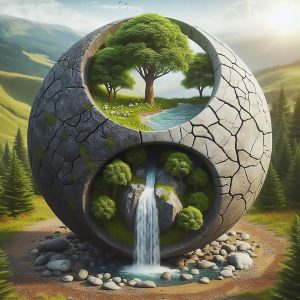
The Earth’s Gentle Whisper by Thalia & ChatGPT
(St Thomas More College, Sunnybank QLD)
In the heart of morning’s light,
where dew-kissed leaves in silence gleam,
whispers of the earth invite,
to live in nature’s tender dream.
Gentle steps on paths we tread,
preserving life in every stride.
From forest green to riverbed,
with care and love, our worlds collide.
Beneath the canopy’s embrace,
we plant the seeds of future days.
In every breath, in every space,
we honour earth in humble ways.
The oceans sing a lullaby.
Their waves a call to mindful care
in azure depths where secrets lie,
we pledge to keep their treasures fair.
The sky, adorned with hues of dawn,
reminds us of our sacred duty
to cherish lands we walk upon,
and guard the planet’s fragile beauty.
In harmony, our lives entwine
with nature’s pulse, a rhythm pure.
To be eco-friendly is our sign
of love for Earth that will endure.

Science by Isabella M & ChatGPT
(St Thomas More College, Sunnybank QLD)
In the dance of stars and atoms’ play,
Science seeks to light the way.
Through cosmos vast and micro world,
where mysteries in beauty twirled.
With logic sharp and curiosity keen,
it charts the realms that lie unseen.
From quarks that shimmer, dark and deep,
to galaxies where ancient secrets sleep.
The formulae in nature’s rhyme,
speak truths of space and boundless time.
In labs where sparks and circuits hum,
the future’s whispered truths become.
From Newton’s apple to quantum’s leap,
in each discovery, wonders creep.
Science writes in equations clear,
the story of our world so dear.
Yet beyond the facts and figures cold,
it’s wonder that the heart can hold.
For in the quest to understand,
lies the magic of the grand.

Nature’s Army of Oddities by Isabella S
(St Thomas More College, Sunnybank QLD)
Rafflesia, high above will loom,
greatest flower, cursed with foul perfume,
lures in flies to their eventual doom.
Nature’s oddity in full bloom.
Life from rot in jungle’s gloom.
Poison ivy crawls,
over the damp forest floor sprawls,
“Touch me!” it calls,
then burns you up to your eyeballs.
Nature’s caution, danger over all.
Nightshades, berries dark and blossoms white,
a thin layer of beauty masks a heart of spite.
Hidden danger’s bite,
toxic beauty, just out of sight.
Nature’s charm with peril’s might.
Foxgloves tall and fair,
bell-shaped blooms with colours rare,
medicinal, but tread with care,
toxic – touch with caution there.
Nature’s gift, a tempered flare.
Wolfsbane’s darkened hue,
poisoned blooms with toxic brew.
Moonlight shadows drew,
danger in its fragrance true.
Nature’s fearsome, lethal view.

Extinction of the Sloth by Cooper
(St Thomas More College, Sunnybank QLD)
The pygmy three-toed sloth gently sleeps.
Yet, as chainsaws gnaw and fires burn,
the sloth’s small world is under siege.
In his extinction, what shall we learn?
Of the loss that our greed might besiege.
In the balance we vow to keep.

Eco Friendly by Aaliyah
(St Thomas More College, Sunnybank QLD)
In a vast world that’s bustling and bright,
let’s make green choices, day and night.
With every action, large or small,
we can make the Earth stand tall.
Recycle glass, cans and paper.
Our efforts will make our world safer.
Use reusable bags with pride and flair.
Protect the oceans and show you care!
Grow fruits and veggies, it’s a grand affair,
with benefits for Earth beyond compare.
Growing your fruits means way less waste.
Reducing packaging, a refreshing taste.
Ride your bike or take the bus,
reduce the carbon footprint fuss.
Support products that cherish the Earth.
Every purchase has its worth.
Let’s all embark on this green crusade
with joyful hearts and plans made.
For a vibrant, thriving, lush domain,
let’s all go green and break the chain!

Spider Lily Sweetheart by Rubi (St Thomas More College, Sunnybank QLD)
Lycoris radiata
The sad goddess of death
will take away your breath.
For her petals are of garnet fire
that blaze to the soft melody of a lyre.
With her striking looks
you can’t deny that she hooks
the flamboyant hummingbirds
and other pollinating plant nerds.
Her blooms, vibrant and violent,
make her largest audience silent.
As she blooms year after year,
from her toxic bulb, steer clear.
For no matter the weather
her petals extend like feathers.
Thriving beauty.
That is her duty.

Lion by Joshua & ChatGPT
(St Thomas More College, Sunnybank QLD)
In savanna’s golden, sunlit grace,
the lion roams with stately pace.
His tawny coat and mighty frame
command the wild, uphold his fame.
With roars that echo through the trees
he claims his realm with fervent pleas.
A call that travels far and wide
to mark his realm, his strength and pride.
In prides, they form a social chain
with bonds of kin, both joy and pain.
The lionesses, stealthily skilled
will stalk through dusk, their hunt fulfilled.
Their manes, like crowns of ancient kings,
are not just for show. When day’s heat stings
from fiercest sun, it helps them cool.
A thermal cloak that’s nature’s tool!
Yet, threats loom large in changing times
from habitat loss, and poachers’ crimes.
Our efforts must blend the lion’s roar
with species survival at its core.

The Aye-Aye by Dominic & ChatGPT
(St Thomas More College, Sunnybank QLD)
In the heart of Madagascar, where the moonlight softly glows,
lives a creature of the shadows, where the baobab tree grows.
With eyes that gleam like amber in the cloak of darkest night,
the aye-aye moves in silence. A phantom out of sight.
Its fur is dark and scruffy, a cloak against the chill.
A spectral hunter of the dusk, with instincts sharp and still.
Upon a twisted finger, long and thin like a bone,
it taps upon the hollow wood, a dainty clicking tone.
This nocturnal magician, with a nose for hidden prey,
listens for secret stirrings where insect larvae lay.
Its claws, like tiny daggers, draw forth that tasty feast,
an enigmatic ritual, performed by nature’s beast.
The aye-aye, a creature strange, misunderstood and rare,
holds the forest’s mysteries, in its silent, midnight stare.
With every tap and scratch, it dances to the tune
of an ancient forest symphony beneath the silver moon.

Funny Fungus by Isabella T
(St Thomas More College, Sunnybank QLD)
In the heart of the forest, where shadows play,
lived a fungus so funny, brightening each day.
Its name was Amanita, the clown of the woods.
Spreading its joy through mycelial hoods.
In symbiosis with trees as its niche,
exchanging nutrients, a mutual wish.
Mycorrhizal connections, a network so grand,
helped trees grow tall, where Amanita would stand.
Its spores spread wide, on a breeze so light,
creating new colonies in dim forest light.
A decomposer, it tickled the earth,
enhancing the cycle of death and rebirth.
As the forest folk gathered beneath twilight’s glow,
Amanita’s role in the web we now know
is nitrogen cycles, and carbon’s grand tour,
of phosphorus pathways, and potassium’s allure.
With a cap so red and white spots so neat,
it grew in the soil, where roots often meet.
Its saprotroph nature, breaks down decay,
turning death into dirt in its own quirky way.

Spider Poem by Zoe
(St Thomas More College, Sunnybank QLD)
In the corners where shadows gracefully weave,
spiders spin their art. It’s crazy what they can achieve!
Eight legs in motion, a graceful ballet,
moving through threads with a purposeful sway.
Eight beady cameras, scanning the scene,
watching for prey, to devour when seen.
Their web weaves a tapestry, intricate, bright.
A pattern of threads that glimmer in the light.
Each strand is a ribbon of nature’s own thread,
designed for the hunt, so our spider is fed.
Venomous fangs, feared by more than a few
are their tools for survival, as many all knew.
To paralyse then feast, a strategy grand,
charmingly crafted in evolution’s hand.

Tree Kangaroo by Chelsea & ChatGPT
(St Thomas More College, Sunnybank QLD)
In rainforests lush, where the canopy sways,
A kangaroo leaps through the forest’s green maze.
With fur that is thick, beautifully tanned,
it grips a branch in its arboreal land.
The Dendrolagus species, a name that is sound,
Jumps tree to tree, high off the ground.
New Guinea, Australia’s, where they are found.
They’re strong but there aren’t many left around.
In the trees, almost silent, a shadow it seems,
moving with grace through daylight and dreams.
Their diet’s composed of leaves, fruit, and flowers,
Foraging quietly in twilight hours.
With nocturnal habits, they rest through the day,
in hidden dens high, where the sunlight can’t stray,
Their call is a growl, a sound that’s quite rare.
A song of the wild through the tropical air.
Conservation efforts are vital, indeed.
For habitat loss is a troubling need.
Protecting their forests, their homes on high,
will help populations reach for the sky.

The Grandeur Gleams by Allessandra
(St Thomas More College, Sunnybank QLD)
In tangled woods, where moonlight gently streams,
the strangler fig holds secrets, and tall dreams.
Its life begins atop a host so high,
its epiphytic way a clever ploy.
The Venus flytrap, sits where insects roam,
Its hairs are sensors when those bugs come home,
When insects step, it snaps and traps with speed,
digesting prey to meet its nutrient need.
In shallow oceans coral polyps build,
Their calcium reefs where vibrant life’s fulfilled,
Algae’s symbiotic dance profound,
is where sea’s photosynthesis is found.
The Arctic’s bloom, the snowdrop’s early flower,
Survives the chill in winter’s frozen hour.
Its petal’s proteins shun iced winter’s veil,
allowing blooms, whose strength will not grow frail.
So, marvel at the science in each life,
from forest depths to reefs and Arctic strife.
The world’s a web where nature’s secrets lay,
in every leaf and creature’s grand display.

Eco Friendly Poem by Jasmin
(St Thomas More College, Sunnybank QLD)
In a world so massive, nature’s our friend.
We can make a difference how problems can end.
By recycling our waste, not in the trash,
we’ll help keep our planet from turning to ash.
Turn off the lights when you’re not in the room.
We need to act now to prevent future gloom.
Plant more greenery, gardens and trees.
Having more flowers helps protect the bees.
Change plastic to paper that goes to landfill
so it won’t pile up into a big hill.
Make shower-time less than eight minutes long.
Anything more could be seen as wrong.
Instead of our cars polluting the air,
treat our environment kindly and fair.
Our Earth will greatly appreciate this act.
Caring for our planet is a vital fact.
POEMS CREATED BY ADULTS:

Angels of Night by Kelly Sheldrick & ChatGPT
(Murdoch University, Perth)
In twilight’s embrace, they take to the sky,
Bats, silent guardians, soaring high.
With wings that cut through the cool night air,
they dance in shadows with grace and flair.
In caves they gather, a colony’s throng.
Their cavern’s a chorus of nocturnal song.
To pollinate flowers, far from home,
from dusk till dawn, they’ll tirelessly roam.
In jungles dense and forests tall,
they hunt for insects through high-pitched calls.
With echolocation they play their part,
in this natural symphony’s work of art.
Seed dispersers in moonlit glens,
they scatter new life, time and again.
In keeping habitats healthy and sound,
their ecosystem-role is profound.
Their marvel of evolution unfolds,
despite those skin-winged fears some hold.
Angels of night in spirited flight
are twilight guardians, singing the night.

Mistaken Identity by Toni Newell
(Striped Legless Lizard)
I am a lizard,
But look like a snake,
Don’t have a forked tongue,
If I bite it won’t ache.
Love to eat crickets,
Spiders and more,
That’s why I’m known,
As a carnivore.
I eat in the day,
Sleep during the night,
Squeak when threatened,
Or if I get a fright.
I’m handsome to look at,
With stripes either side,
Relatively small,
Makes it easy to hide.
My enemies are,
The fox and the cat,
If I really get scared,
Drop my tail to distract.
Sometimes the humans,
Make a mistake,
Become very frightened,
They think I’m a snake.
I am Australian,
And want to remain,
Out there in the grasslands,
In that lovely terrain.

The Meerkat Mob by Jeanie Axton
Standing high up on a rock
Mumma Meerkat checked the sky
on sentinel duty for predator birds
flying past on high
Daddy Meerkat ran around
keeping pups out of danger
raised his hair and hissed quite loud
when threatened by a stranger
Grandma Meerkat faced the sun
as she was feeling beat
her tummy a solar pane
soaking in the heat
Grandpa Meerkat looked for food
he had a big mob to feed
scratching deep in the sand
his nose guiding him to seeds
All the Meerkats knew their place
decisions made on the go
working together in community
while putting on a show

Little Tommy Roundhead by Sharon Hammad (Winmalee NSW)
Diporiphora australis
Little Tommy Roundhead
sunbakes on the lawn,
tattoos marching down his back,
yellow ochre yawn.
Tail that tapers daintily
curving to the sky,
watching out for danger with
each dark unblinking eye.
Darts behind a pot plant,
scampers up the wall,
disappears as fast as if
he wasn’t here at all!
Tommy Roundhead or Diporiphora australis can be found in Australian backyards, but only if you look carefully.

A Super-seed Solution by Sukarma Thareja (Kanpur, India)
We’re having a
global warming crisis
as temperatures
are on the rise.
We’re seeing more droughts
and rivers are shrinking.
Cycles and seasons
bring more surprise.
Crops such as rice,
or maize and wheat
are struggling in
the drought and heat.
So how can we feed
humanity?
How can we beat
this calamity?
Millets are tough.
Plants get less stressed.
This Indian cereal
crop is the best!
The United Nations declared 2023 as the International Year of Millets. Millets use less water and take less time to grow than most other cereal crops. They can withstand drought and heat and have a high nutritional value.

No one likes a fungus by Ella Thompson
No one likes a fungus, and I find that’s quite unfair.
There are lots of different fungi you might find to love out there.
Some lurk in darkest corners. Others big and bold and bright.
My favourite kind of fungi are the ones that glow at night!
Most fungi are hard workers – cleaning-up the forest floor,
sending back all nutrients to where they were before.
Some have special powers and can stop you getting sick.
Remember THAT – the next time that you see one and say “ick”.
Earth needs all its fungi so that ecosystems thrive.
In fact, a giant fungus is the biggest thing alive.
No one likes a fungus, and I really think they should.
They’re not as nasty as you think…
… they’re just misunderstood.

Sea Stars by Graham Seal
Once they were called Starfish,
but now they’ve changed their name.
Turns out they’re not a fish at all,
so their name can’t stay the same.
Starfish don’t have fishy bits,
like gills or scales or fins,
instead they are echinoderms –
that means they’re sea urchins.
But whatever you want to call them,
forever floating in the sea,
whether it’s ‘Seastar’ or ‘Starfish’ –
STARS they’ll always be.
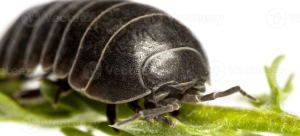
Here’s a suite of 4 Limericks about a crustacean:
See You Later, Slater
A species recovery plan by Mary Cresswell
(If you think I’m an insect, you’re wrong:
My cousin the lobster has long
dominated the market –
but he can just cark it
while I sing my inimitable song.)
They first found me under a pot –
Where I came from, they knew or cared not.
They checked up in the books
and turned loose the chooks
and wiped out my home in a shot.
Now, I lay all my eggs in a pouch
to keep the babes safe in a stoush.
When they’ve got enough legs
I race off to the dregs
and perform as The Fabled Wood Louse.
Plus, I know to curl up like a pill
and roll at top speed down the hill –
If that sort of vibe
doesn’t salvage the tribe
then I really can’t tell you what will.

The golden orb weaving spider by John Scally with ChatGPT
In the garden’s twilight glow, the golden orb weaver spins,
No reason to fear, for her nature is kind;
she’ll share the garden,
she doesn’t mind.
Her silk web, a masterpiece,
glistens in the light,
Elaborate and strong,
a marvel of nature’s might.
She helps control the insects, with grace she does her part,
Eating mossies, moths, and beetles, with a gentle, quiet art.
Her venom, a mystery, in labs it’s being sought,
For medicine and biotech, new wonders may be wrought.
In nets of long, bendy silk, her prey find no escape,
Trapped in sticky threads, their fate she does shape.
The golden orb weaver, a guardian of the night,
In her web of wonders, she weaves nature’s light.

Villanelle for Eastern Quolls by Michael Leach
Eastern quolls awake then run through the night
round their acreage—each home range.
Their lives depend on us doing what’s right.
Eastern quolls like to stay out of the light
in a hole, cleft, log or old grange.
Eastern quolls awake then run through the night.
At zoos and reserves, we study the sight
of eastern quolls’ fur—coats that change.
Their lives depend on us doing what’s right.
Eastern quolls are like house cats that get quite
displeased when not roaming free range.
Eastern quolls awake then run through the night.
These quolls run into pests, bugs and the blight
of fires that grow as climates change.
Their lives depend on us doing what’s right.
These quolls are spotted in Tassie alright
but mainland sightings would be strange.
Eastern quolls awake then run through the night.
Their lives depend on us doing what’s right.

What Can You Do? by Graham Seal
What about recycling?
That’s something you can do
to save the planet every day
and save some money, too.
You could take up gardening
and grow veggies in the yard,
or start a steamy compost heap,
it isn’t very hard.
Maybe you could buy less stuff,
not use so much plastic,
and more refillable containers
would be just fantastic.
However you go about it,
whatever you might do,
please just do something,
because it’s up to me and you.

Wheelie Bins by Graham Seal
Some Wheelie bins are yellow,
Some Wheelie bins are green,
And there is a shiny red one –
They keep things nice and clean.
But only if our rubbish goes
Into the proper bin,
And if you take a little care
About the things that you throw in.

Zap, Crackle – Stop! by Celia Berrell
It sounds like a cracker
each time a bug-zapper
electrocutes one of those insects.
To protect our meat pies
from pic-nicking flies,
that zapper is nowhere near perfect.
It’s a haphazard thug
killing mostly good bugs
important for plant pollination
plus millions of beetles
who never harm people.
It’s rather a sad situation.
Their UV light glow
won’t attract mosquitoes.
It’s CO2 breath mozzies seek.
So this gadget’s NO-GO
and, for those in the know,
it’s best to use bug spray with DEET.






